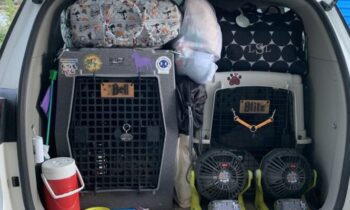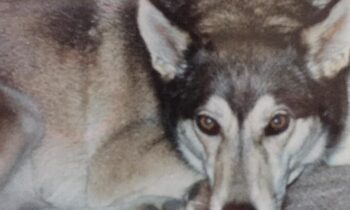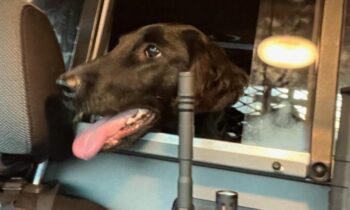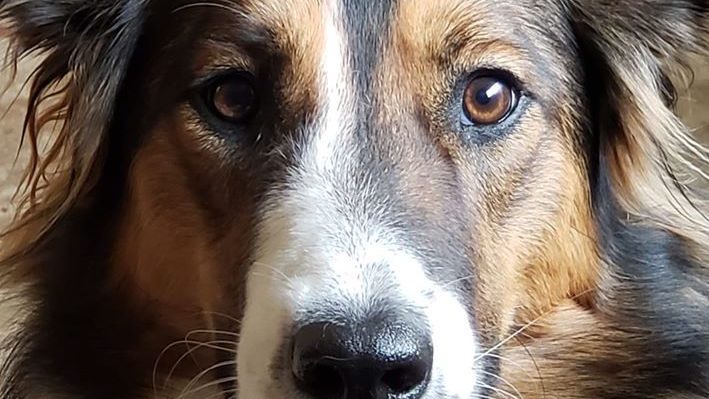


Face masks have become a common sight on humans in the last few months, and dogs are wondering what’s up! Has your dog had an unexpected reaction to seeing you, your family, or your friends in face masks? Did your dog bark or run and hide? Did your dog not even notice? Or did she act confused?
Were you surprised by your dog’s behavior?
I asked dog trainers for their advice to help dogs get used to humans wearing masks.
Ray Little (Pennsylvania) Costumes or facial coverings—even just hats—change our general appearance to the dog and we may be perceived as a threat initially. Or the dog may simply perceive [the facial covering] as an impediment to their ability to read our facial expressions and body language. I would suggest trying to desensitize the dog by putting the mask up to your face for very brief periods of time and, at the same time, rewarding your dog with something that he likes—treats or petting if your dog likes that. You will be combining desensitization with positive reinforcement. The goal is always that the dog associates good things with the appearance of the mask whether it’s on your face or not. Next, you can start to increase the time of mask wearing while spreading out the rewards or randomizing them. All of this should be done in a setting where your dog feels most comfortable. If your dog has had previous bad experiences with somebody wearing a mask, you can do the same things and think of it as a counter-conditioning exercise.
Rebecca King (Ohio) Pair the presence of the mask with delicious food, at a distance and in a way that keeps your dog under threshold. They should be voluntarily moving towards you, all wiggle between the shoulders and the hips, not stretching to take food that is close to a scary mask. Dogs outside of the socialization period are not great generalizers, so masks inside the house may not translate to people outside the house; same for familiar and unfamiliar people.
Anna Abney (South Carolina) Wear it around the house. Wear it when feeding and during walks. Wear it, give treats, and take it off when the treats are done.
Sally Foote DVM (Illinois) Toss lots of rewards around the mask, holding the mask, putting the mask on and off. Every day, every meal.
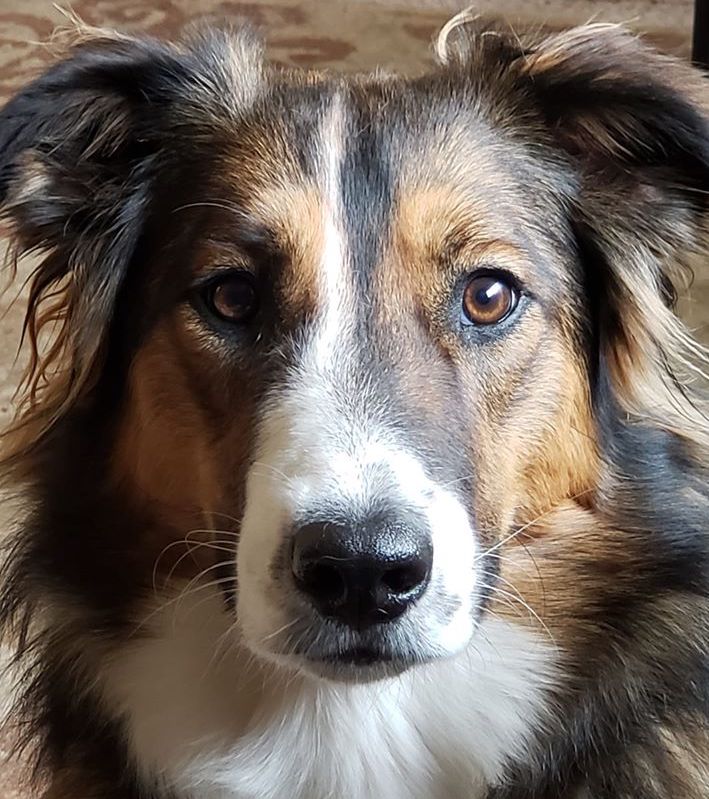

Photo by Liz Palika
Jill Gibbs (Montana) Of course, I was going to do a slow introduction to Alastor as I had to wear [a mask] in the Barnhunt blind. I didn’t do it and he almost broke my nose trying to pull [the mask] off. The puzzled look he gave me when he couldn’t see my mouth was very informative. I then made sure my eyes were “smiling” to let him know it was okay. Gave him treats every time I talked to him.
Elisha McCallum (British Columbia) I’ve trained a behavior using the mask. I toss it and ask for a retrieve, reward, put the mask on my face, reward, and then take off, reward and toss it again. Now it’s a pretty exciting game when the mask comes out. Mask = play time and cookies.
Alisha Ardiana (California) My dog has learned the different masks that I wear mean that we’re going to different places. It’s really amazing. She knows which mask means we are walking in the neighborhood, which mask means I’m leaving, and which mask means we’re going hiking. This is classical conditioning. A equals B. Make the mask mean you’re going to do something awesome. If you think about it, it’s actually a really good visual cue for a dog to know what’s happening next.
Kathy Smith (North Carolina) Indy knows masks equal closer contact with people at the store via curbside pickup, or at our destination. He associates things very quickly. Masks aren’t scary for him—he walks right up to people with masks on and waits to be petted. He’s a dog who adores humans. The sight of a mask makes him very happy!
Carmen LeBlanc (Washington) Tried and true desensitization and counter-conditioning is the best. Mask on, give a treat. Mask off, no treats. Rinse and repeat dozens of times, gradually increasing length of time that you keep the mask on, and throwing in some easy training during the mask-on segments. Be sure to vary the duration of mask-off segments as well—sometimes a few seconds, sometimes 30 seconds, sometimes minutes. Practice with a few other family members and friends, and voilà, you have a dog who’s comfortable and confident with masked people!
Jody Epstein is a certified behavior consultant and certified professional dog trainer. She holds a master’s degree in Animal Behavior from Tufts University. Jody has been training professionally for more than 12 years. Jody is part of the Academy of Pet Careers team, teaching the next generation of trainers.
Jody has written a blog on Acclimating Dogs to Face Masks:
https://www.theacademyofpetcareers.com/blog/acclimating-dogs-to-face-masks/
Risë VanFleet, PhD, RPT-S, CDBC, is a co-founder and director of the International Institute for Animal Assisted Play Therapy®. She is also the President of the Family Enhancement & Play Therapy Center, Inc., in Boiling Springs, Pennsylvania, an organization specializing in the training and supervision of child, family, and play-therapy professionals. She also provides therapy to families and runs the Playful Pooch Program. She is a Licensed Psychologist (PA), Registered Play Therapist-Supervisor, and Certified Dog Behavior Consultant with 45 years of clinical, supervisory, administrative, and teaching experience. Her specialties include AAPT, Filial Therapy, chronic medical illness in families, disaster mental health, complex trauma and attachment issues. She has trained and supervised thousands of clinicians internationally. She also provides behavior consultation with family dogs, and a specialty with traumatized, unsocialized dogs.
Risë VanFleet has written a blog on Animals and Face Masks: Creating Safety, Fun, and Familiarity:
http://risevanfleet.com/international/animals-and-face-masks-creating-safety-fun-and-familiarity/?
You can change your dog’s mind about what a mask on your face predicts by showing him that good things happen when you are wearing a mask. Once your dog is confident with you masked at home, extend your success by showing him that mask-wearing humans outside your home can also be safe and that calm and confident behavior around masked humans can be rewarding.

